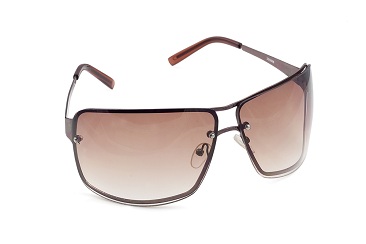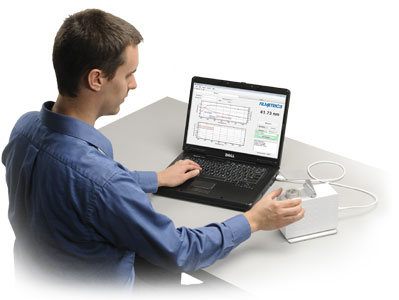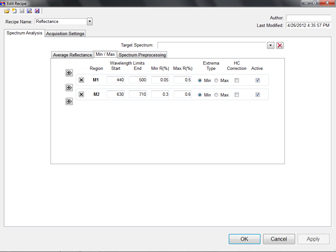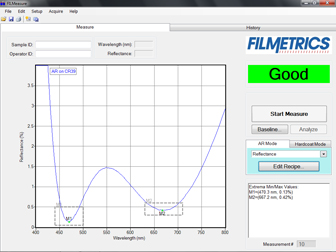F10-ARc
Measuring Ophthalmic Coatings

Spectral reflectance is used on ophthalmic lenses to measure anti-reflection (AR) spectra and residual color, as well as hardcoat and hydrophobic film thickness measurement.
AR Coating Thickness Measurement
AR coatings are applied to reduce glare and the resulting eye fatigue caused by uncoated lenses. The blue-green hue of AR-coated lenses has also turned out to be an attractive feature for many consumers. Therefore measurement and control of the AR coating and its color has become increasingly important.
The Filmetrics® F10-ARc anti-reflection coating instrument was designed especially for ophthalmic applications and comes standard with a number of proprietary features for characterizing AR coatings. The F10-ARc makes it easy to measure curved surfaces with anti-reflection coatings on eyeglasses and other optical lenses.
Hardcoat Measurement
Hardcoats are applied to impart increased scratch and UV resistance. This protection is supplied to the lens by covering it with the hardcoat and to the AR coating by providing a harder, less flexible foundation.
The Filmetrics F10-ARc is available with a hardcoat measurement upgrade. It is possible to measure both one- and two-layer hardcoats up to 15 microns thick.
Hydrophobic Layer Thickness Measurement
Hydrophobic coatings impart water- and oil-repellent properties to AR-coated lenses, making them easier to clean. These hydrophobic layers are extremely thin - on the order of a hundred atoms - and thus require short-wavelength (UV) light to measure most accurately. The preferred instrument for measuring hydrophobic layer thickness is the F10-AR-UV with the UPG-RT-to-Thickness and UPG-Thickness-to-n&k upgrades.
Transmittance Measurements of Lenses
An optional stage (SS-Trans-Curved) for the F10-AR is available for measuring lens transmittance.
For ophthalmic applications, contact our thin-film experts.
Filmetrics offers free trial measurements - results are typically available in 1-2 days.
Thickness Measurement Example

Reflectance data was collected using our F10-ARc system with optional HC upgrade which allows hardcoat thickness measurement. This instrument uses an optical contact probe which inherently reduces the effect of backside reflections and allows for measurement on concave and convex surfaces.
The contact probe is placed on the surface of the lens. The spectral data is collected and then automatically analyzed by FILMeasure to determine if the lens meets the designated reflectance specifications. It is possible to measure average reflectance, local minima and maxima, and compensate for the presence of a hardcoat. This particular lens conformed to requirements and a clear “Good” indication is displayed to the system operator.


